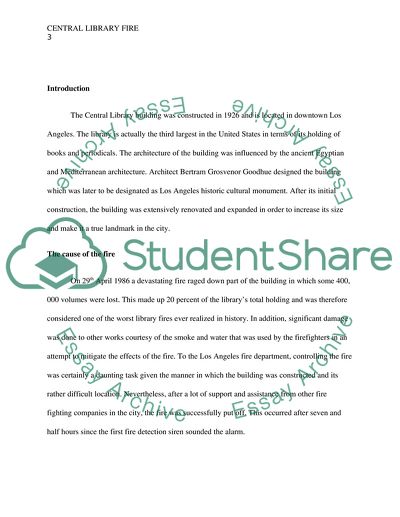Cite this document
(Central Library Fire in Los Angeles Research Paper, n.d.)
Central Library Fire in Los Angeles Research Paper. Retrieved from https://studentshare.org/history/1784112-central-library-fire-los-angeles-california
Central Library Fire in Los Angeles Research Paper. Retrieved from https://studentshare.org/history/1784112-central-library-fire-los-angeles-california
(Central Library Fire in Los Angeles Research Paper)
Central Library Fire in Los Angeles Research Paper. https://studentshare.org/history/1784112-central-library-fire-los-angeles-california.
Central Library Fire in Los Angeles Research Paper. https://studentshare.org/history/1784112-central-library-fire-los-angeles-california.
“Central Library Fire in Los Angeles Research Paper”, n.d. https://studentshare.org/history/1784112-central-library-fire-los-angeles-california.


